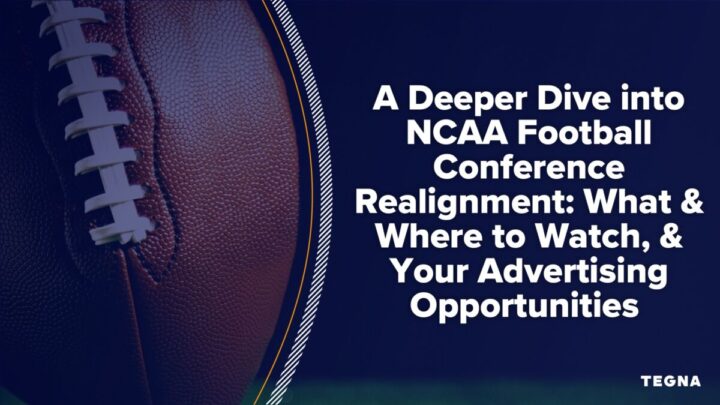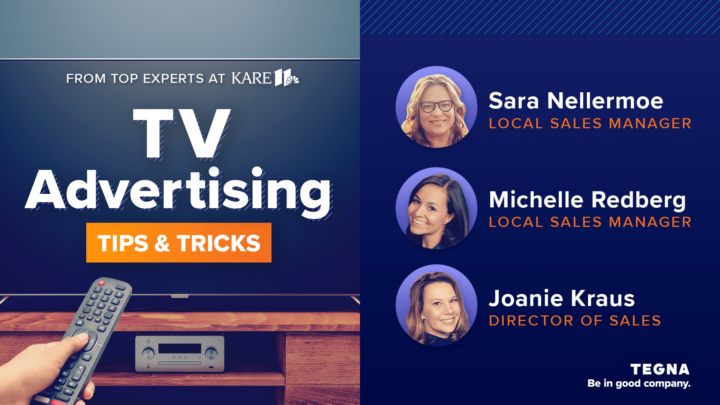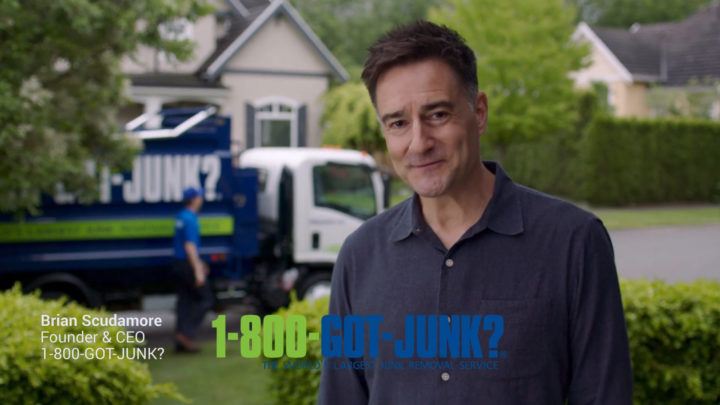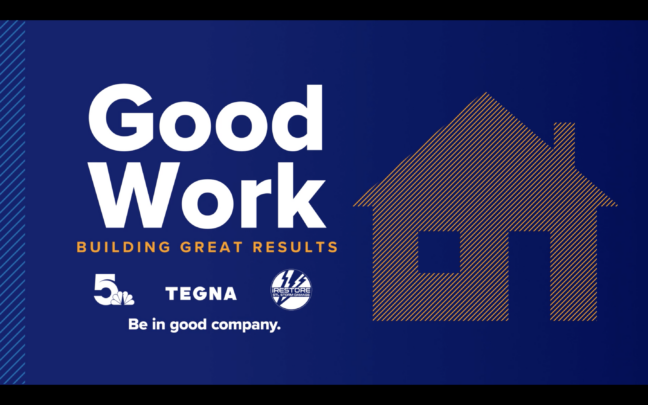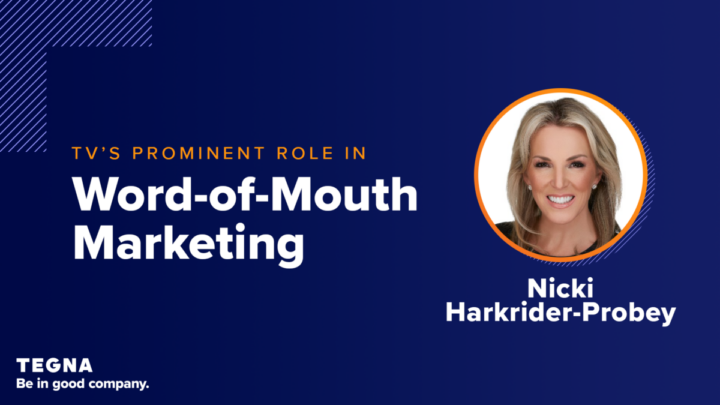Choosing the Right Local Media for Your Advertising Campaign
In today’s competitive business landscape, advertising locally is crucial to any brand’s marketing strategy. Choosing the proper local media channels is essential to effectively promote your products or services to a local audience. In this guide, we’ll explore local media, how to advertise locally, industries that benefit from it, various local media advertising options, successful local media campaigns, and the importance of creating a cross-platform strategy.

As brands navigate the web of consumer preferences, market dynamics, and economic trends, it becomes increasingly clear that a localized approach to advertising is not only beneficial; it’s a strategic imperative.
Whether you’re a mom-and-pop shop on Main Street or a national brand on Madison Avenue, a robust local media strategy will connect you with consumers on an important level. Not only does a local media strategy recognize the significance of community and the subtleties of regional culture, but it also taps into the halo effect by aligning your brand with trusted and familiar voices.
No one knows local media better than your local TV news stations, so we’ve enlisted the help of expert local sales managers at TEGNA, including Becca Monroe-Hardy at WLTX in Columbia, South Carolina; Michael Clifford at 11Alive in Atlanta, and Jeff Burrell at WWL in New Orleans.
They’re providing tips and tricks to help elevate your brand’s local media strategy to drive engagement, build loyalty, and ultimately carve out a unique space for your brand in the hearts and minds of your local audience.
Let’s get started with the basics.
What is Local Media?
“Local media is any media, whether it be TV, radio, or local websites, that serves the communication needs of the local community, which includes delivering news, information, and entertainment content tailored to people within a particular region,” says Burrell.
“And it often holds a special place in the hearts of community members. In New Orleans, we have a lot of local pride, and you see just how big the appetite is for local content.”
While local media is crucial in keeping residents informed about local events, issues, and businesses, Monroe-Hardy adds that it’s also an excellent platform for brands to align with.
“While local media focuses on serving the local community, it can also provide businesses with a marketing platform to reach local audiences.”
How Do I Advertise Locally?
Advertising is all about reaching the right audience in the right way at the right time. To do so effectively, creating a media plan is one of the most critical components of your marketing campaign. However, there are many factors to consider when crafting your strategy.
“Modern-day media consumption is multi-faceted,” says Monroe-Hardy. “Just as viewers don’t watch stations, they watch programs. Media consumers don’t just get their news and entertainment from one source. To reach these consumers, we want to put our clients’ marketing messages where they are.”
Where is your target audience consuming its media? Using customer data to build persona profiles is one way to gather insights, and a cross-channel marketing campaign may be the answer to reaching viewers where they are.
“In the last few years, I have not found anyone who only consumes media through broadcasts or streaming OTT. So a well-balanced media plan helps clients effectively reach their target audience and segments,” says Clifford.
“Investing in Broadcast, OTT, and Digital is important because this mix appeals to different audiences and user behaviors and maximizes exposure with enough frequency to leave an impact on the target audience,” Clifford adds. “This is best practice because it enables our clients to strategically allocate resources, reach the right audience, and optimize campaigns accordingly as needed.”
Burrell breaks this down even further, explaining, “When an advertiser has more of a broad or defined audience, we can tailor the campaign and messaging to specific programming to reach the masses. With OTT streaming and digital, we can get niche and target by geographies and specific demographics, so we recommend that our partners take a holistic approach.”
Industries That Benefit from Local Media
With any marketing and advertising campaign, there’s no one-size-fits-all approach. Each campaign must take the brand’s unique voice, differentiators, brand goals, and measures of success into consideration. However, local media alignment can benefit all brands of any shape and size.
“I think certain industries are more prevalent with local advertising (legal, healthcare, education, QSR, automotive). However, I truly think that any industry, including B2B, can see great success with local advertising if they have a sound strategy, good creative, proper spending, and good attribution mechanisms,” says Monroe-Hardy.
Clifford agrees.
“The honest answer is that almost all industries perform well. With targeting capabilities, we can reach almost any audience and build a successful campaign for almost all verticals.”
Below is a snapshot of some of these industries:
- Car Dealerships: Dealerships want to target buyers in a specific region, so local media is paramount to their media plans. Car dealership advertising often includes billboards, television ads, and local digital channels to promote their vehicles and services.
- Law Firms: Advertising a law firm’s specialty and practice often includes local media channels to boost awareness of the services provided.
- Home Improvement: Contracting businesses often use local media to promote their services to homeowners. These services may include plumbing, landscaping, or painting.
- Hospitals: According to our recent research, the average consumer cannot distinguish one hospital’s specialty from another. These healthcare institutions can improve brand awareness by adding TV advertising, billboards, and local digital channels to a hospital’s marketing plan.
- Urgent Care: According to “Checking the Pulse of Today’s Healthcare Consumer,” we know that 22% of consumers prefer urgent Care centers are preferred over primary care. However, it can be difficult for urgent care facilities to distinguish themselves, especially with competition from big brands. Urgent care advertising can help companies set themselves apart in a crowded landscape.
- Hotels & Resorts: Due to inflation, Staycations and local travel have become more popular. As part of your media plan, consider advertising your hotel or luxury resort to more local audiences.
Local Media Advertising Options
While viewing habits change rapidly, one thing remains constant regardless of the platform: The influence of video is potent. Americans spend 6+ hours daily consuming video, which drives consumer behavior.
- Video increases purchase intent by a staggering 82%
- Nearly 3 in 4 consumers are more likely to buy a product or service after watching a branded video
- 70% of advertisers who don’t currently use video as a marketing tool plan to start this year
“Most of my recommendations are to invest in broadcast, streaming/OTT, and video pre-roll on our station website,” advises Monroe-Hardy. “They are all part of the video spectrum, and we have numerous examples of how all three platforms have performed well in the past for our partners in terms of ROI, engagement, and growth for the business.”
Burrell agrees.
“Because audiences are watching broadcast television, they’re streaming, and they’re constantly on their phones, we’ll recommend a combination of broadcast, streaming, and digital to increase the frequency at which the audience sees the message,” explains Burrell. “Otherwise, you’re missing eyeballs if you’re not taking a holistic approach and doing all those solutions combined.”
This is why ensuring a comprehensive marketing strategy that includes linear, streaming, and digital for targeting and amplification to drive results is critical.
Let’s dive into specifics for all three platforms.
Local News & Local Television Advertising
Local news advertising can take various forms, including traditional 30-second commercials, sponsored content such as weather and traffic reports, lifestyle show appearances, squeeze backs (split screen between advertising and the on-air content), logo placements, or on-screen banner ads … just to name a few.
Television Advantages
These TV advertising formats enable brands to raise awareness, promote local events, drive foot traffic to brick-and-mortar locations, and build strong relationships with local customers. And there’s more. Other advantages include:
- Visual Medium: “Leveraging visual and auditory elements, TV/OTT/digital video ads effectively convey emotions and stories, making them a potent brand-building tool,” says Clifford.
- Extensive Reach: “Local TV advertising combines far-reaching impact with local relevance, making it an indispensable channel for businesses aiming to thrive within their immediate vicinity,” says Clifford. “Then, in terms of targeting, Broadcast TV advertising boasts the widest audience reach, making it the most effective for broad awareness campaigns.”
- Time Spent: “Local TV advertising is advantageous because it is a platform where consumers spend a large portion of time throughout the day and is a platform where you can reach thousands at one time,” adds Monroe-Hardy. “Then, when these consumers have a specific need you can serve, they’ll call you before someone else, especially if they saw you on TV.”
- Brand Safety & The Halo Effect: In a world where misinformation looms, advertisers must be hyper-focused on keeping their brand safe from inadvertently supporting potentially harmful content. Luckily, a Knight-Gallup study has found that audiences have a significant amount of trust in their local TV news stations. For brands, 84% of consumers feel that advertising within news increases or maintains brand trust. On top of that, the IAB found that consumers who view advertising on their favorite news outlets are also:
-
- 45% more likely to visit the brand’s website or search for more information online
- 43% are more likely to consider buying from the brand
- 41% more likely to talk about the brand with family or friends
Television’s Disadvantages
Though its disadvantages are few and far between, TV advertising can be challenging without realistic expectations before the campaign begins.
“The challenge is getting people to commit to a timeframe. People often want immediate results, which is often a process,” advises Clifford. “It is always important to have what we call an ‘upfront contract,’ clear expectations, and full transparency with our clients to build bonds and rapport with clients. It’s critical to success.”
It can also be challenging to calculate TV advertising ROI. A tool like TEGNA Attribution can also help here, as it connects the dots between ad viewership and success metrics like conversions, website visits, and brand lift.
“On the broadcast side, there has been some erosion of ratings/share, but we live in a world with imperfect measurement,” says Monroe-Hardy. “We overcome this challenge by having a plethora of past successes to reference. We’ve seen great success with sponsorships providing our clients exclusivity, branding, frequency, and integrated campaigns.”
Streaming/ OTT
Streaming advertising, or Over-the-Top (OTT) advertising, has gained popularity as more consumers shift from traditional television to streaming services. OTT advertising allows brands to reach target audiences through streaming services by displaying video ads before, during, or after the streaming content. These ads can be highly targeted based on various factors, including demographics, interests, and viewing behavior, making them more relevant to viewers and more effective for advertisers.
Advantages of Streaming
Critical features of OTT advertising include:
- Targeted Advertising: Advertisers can leverage user data and preferences to deliver highly targeted ads, increasing the chances of engagement and conversion. “OTT is advantageous because it also has the benefit of sight/sound/motion/emotion but in a highly targeted environment,” Monroe-Hardy explains. “The OTT environment is a more 1-to-1 platform where you can reach households based on demographic makeup, intent, and historical data.”
- Non-Skippable Ads: In many cases, OTT ads are non-skippable, ensuring that viewers view the entire ad message.
- Measurable Results: OTT advertising offers robust analytics and tracking capabilities, allowing advertisers to measure the effectiveness of their campaigns and make data-driven optimizations.
- Cross-Device Reach: OTT advertising can reach viewers on various devices, including smart TVs, smartphones, tablets, and computers, making it versatile and accessible.
- Interactive and Engaging: Some OTT ads can be interactive, allowing viewers to engage with the content, such as clicking links or purchasing directly from the ad.
Disadvantages of Streaming
While streaming and over-the-top (OTT) advertising offers several advantages, they also have their fair share of disadvantages.
- Limited Reach: While OTT platforms are gaining popularity, they may only reach some demographics, particularly older or less tech-savvy audiences who still rely on traditional TV. To overcome this challenge, we recommend a cross-platform strategy that includes broadcast TV and digital channels.
- Content Association: Advertisers may have less control over the content they are associated with, potentially leading to brand safety concerns if their ads appear next to controversial or inappropriate content. A new study from our friends at PREMION found advertisers recognize that premium content matters more than ever. Increasingly, advertisers consider alignment with reputable, high-quality content as a pivotal factor for brand credibility — and it’s where they’re investing more of their ad dollars.
- Ad Fraud: Like digital advertising, OTT advertising can also be susceptible to ad fraud, including bots or fake views, which can waste ad spend and undermine campaign effectiveness.
Despite these disadvantages, OTT and streaming advertising can be highly effective for reaching specific audiences, and with the right strategy, they can complement a broader advertising campaign. Advertisers should consider their target audience, goals, and budget when investing in OTT advertising.
Digital Advertising
Digital advertising uses online channels and platforms to promote a brand’s products to a target audience. It’s an area that has become increasingly popular, not only for consumers but also for advertisers, for several different reasons.
“New Orleans has a passion for local content, and when our viewers go to our station website, WWLTV.com, and see a local advertiser, they’re much more likely to notice that display ad or that pre-roll video – and we also have data that shows that,” says Burrell.
Ad recall and brand affinity aren’t the only advantages of adding digital to your multi-platform campaign. Local digital strategies and channels can also help establish credibility.
Digital Advantages
“Digital is where consumers spend the lion’s share of their time and is often consumed in tandem with OTT or broadcast,” says Monroe-Hardy. “Not only does it complement both OTT and broadcast well, but it also provides a high level of targetability and measurability.”
Clifford agrees.
“Local digital advertising stands out for its unparalleled precision in targeting, allowing businesses to pinpoint specific local demographics, behaviors, and interests with exceptional accuracy. This accuracy ensures that messages reach the right people, optimizing the impact of campaigns.”
“Furthermore, the realm of digital advertising grants immediate access to real-time data and analytics, allowing advertisers to monitor and fine-tune their efforts on the fly – unlike traditional TV campaigns.”
Online Disadvantages
While digital advertising offers numerous benefits, it also comes with several challenges, including overwhelming choices, such as choosing between pre-roll, geofencing, native advertising, programmatic, contextual, and so on.
“With digital, and to some extent OTT, one of the challenges is a lack of familiarity and understanding of the space,” explains Monroe-Hardy. “We overcome that by walking prospects through their typical day-to-day so they can understand how integral digital is in their daily lives. When they have more detailed questions, we try to answer those understandably without going too far down the digital rabbit hole.”
Examples of Local Media Campaigns That Worked
Local media campaigns can effectively reach and engage a specific community or geographic area. Here are some examples of local media campaigns that have worked for TEGNA partners.
Popeyes Chicken Sponsors WWL-TV’s Mardi Gras Parade Tracker App
Since 2011, TEGNA’s WWL in New Orleans has used an app to track the 65-plus parades during Mardi Gras to help festival-goers have the best experience – from cutting down wait times to finding restrooms. It’s also an app that brands can use to join the community, gain awareness, capture foot traffic, and increase sales.
“During Mardi Gras, there are certain days when 15 parades are happening, and our viewers will use the parade tracker app to get around traffic, see where the front of the parade is, where the back of the parade is,” explains Burrell. “We’ll also have sponsors like Popeye’s Chicken on the map so users can see where the nearest location is to eat. We’ll show Urgent Care and Martin’s Wine Cellar locations so party-goers can get more spirits or go to the doctor when they’ve had too much.”
A Seat at the Table: How WLTX & JP Holley Funeral Celebrate Diversity
TEGNA’s WLTX in Columbia, South Carolina, has introduced a new series called A Seat at the Table, amplifying and celebrating Black voices affecting change in the community. The goal is to spark a conversation that leads to a greater understanding of why inclusion is necessary and representation matters – and it’s a subject that the program’s sponsor, JP Holley Funeral Home, strongly resonates with.
“Having a voice to reach the community is one of the best ways of marketing and touching your audience,” said Jonathan Holley, the company’s fourth-generation President and CEO. “Representation is everything, so JP Holley must align with A Seat at the Table so our story is heard.”
As the exclusive sponsor of A Seat at the Table, JP Holley runs weekly promotions and is featured during the segments that air during the 11:00 PM news on the second Thursday of each month and again the following day. They are also visible on the A Seat at the Table section of WLTX.com and on social media.
“The results have been excellent. I constantly receive messages from all over saying how proud the community is about seeing us on television, noted Holley.
Georgia Natural Gas Partners with 11Alive to Host Annual Earth Day Electronics Recycling Event
According to a 2023 HubSpot poll, affordable healthcare, income inequality, climate change, and racial justice are the most essential issues respondents want to see companies take a stance on. A longtime partner of TEGNA’s 11Alive, Georgia Natural Gas, takes advantage of this consumer sentiment with its many community partnerships, including the Annual Earth Day Electronics Recycling Event.
“GNG believes in helping our customers build a sustainable future. Last year’s Earth Day recycling event was so successful we collected 15,000 pounds of electronics previously destined for a landfill. That was a record. This year, we’re encouraging the Atlanta community, including residential neighbors and metro area businesses and schools, to help us to collect 20,000 pounds,” says Maurice Baker, manager of community relations at GNG, told 11Alive.
Final Thoughts: Creating a Cross-Platform Strategy
With 64 local news stations in 51 markets nationwide, at TEGNA, we know the power of local advertising media better than anyone. Our team of marketing experts has driven results for thousands of businesses across the country, and we don’t plan on stopping any time soon.
We might be biased, but we’re advocates for choosing the right partner for your local advertising campaign, and this guide will dive into everything you need to know about running a cross-platform campaign in your local community. Let’s get in touch to get your regional media strategy up and running.
Want to learn more about the benefits of a local media strategy? Check out:
- 10 Tips For Advertising Locally
- 5 Local Digital Advertising Strategies for Businesses
- National vs. Local TV Advertising: Which is Right For You?
Frequently Asked Questions
What is the best place to advertise locally?
When determining the best place to advertise locally, it’s crucial to conduct market research, understand your target audience, and set clear objectives for your advertising campaign. Consider using a mix of broadcast TV, streaming/OTT, and digital channels with your local news station to reach your local audience effectively and measure the performance of your campaigns to make necessary adjustments.
What are the benefits of local advertising?
Whether you’re a mom-and-pop shop on Main Street or a national brand on Madison Avenue, a robust local media strategy will connect you with consumers on a profound level. Not only does a local media strategy recognize the significance of community and the subtleties of regional culture, but it also aligns your brand with an enduring trust in familiar voices (known as a halo effect).



